Do you love olives so much you could eat them for breakfast, lunch and dinner? Okay, so do we! Whether you’re an olive lover or not, you’ll love checking out the Great Habous Olive Market in Casablanca, Morocco. Full of locally grown olives of all different colours, tastes and smells, it’s an assault on the senses.
So many olives, your nose will find them before your eyes
When you near the olive market, before you even see it, the first thing you’ll experience is the smell. The pungent smell of brine will seep into your nostrils just before you see the entrance to the market. It’s a good help actually, because the market itself is tucked away off of a main street in the Habous Quarter. If you don’t keep your eyes’ peeled chances are you’ll miss it!
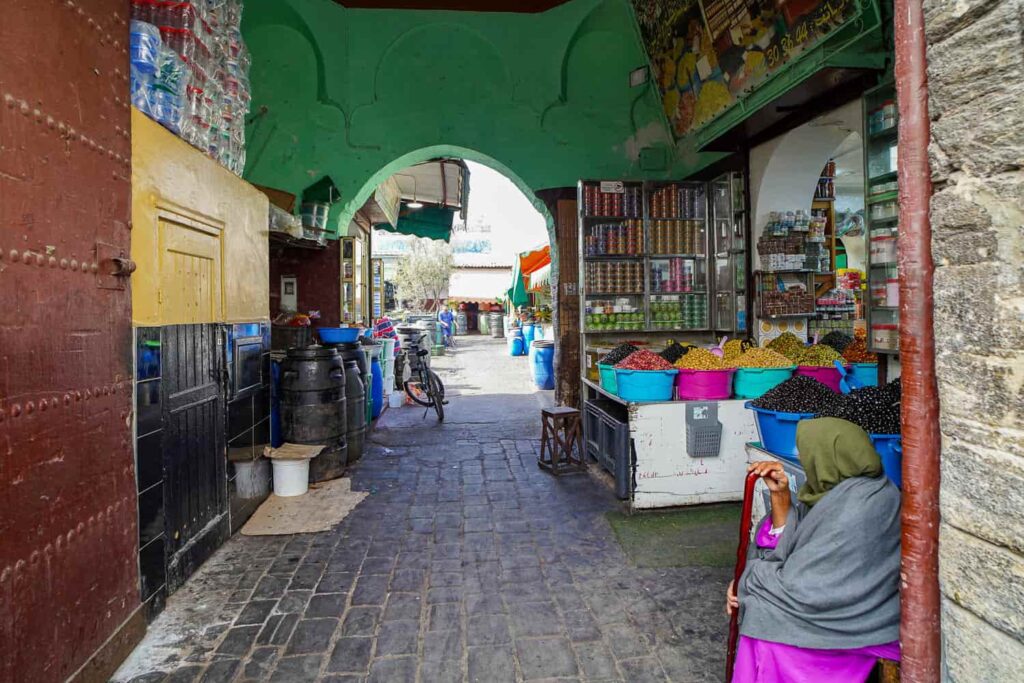
As you walk in, the first thing you’ll notice is how quaint and quiet the Great Habous Olive Market is. The courtyard is a cobblestoned area, with an unmistakable olive tree growing right in the centre. For a moment you’ll forget where you are.

Some of the best olives in the world
As one of top producers of olives in the world, it has the perfect location and climate for growing olives, the Mediterranean. The olives here are packed with antioxidants and healthy fats, as well as high levels of vitamins A and E. They’re an extremely healthy snack alternative, and by far some of the best olives money can buy.
Green, brown, purple, what’s the difference?
Interestingly enough, the different colours of the olives actually refer to their ripeness, not to a specific variety.
Green olives are the unripe fruit of the olive tree. Whereas the darker coloured fruits of red and brown, all the way to purple and black, are the ripest. They’ve simply been left on the tree for a longer period of time to ripen, and therefore become much darker in colour and milder in taste.
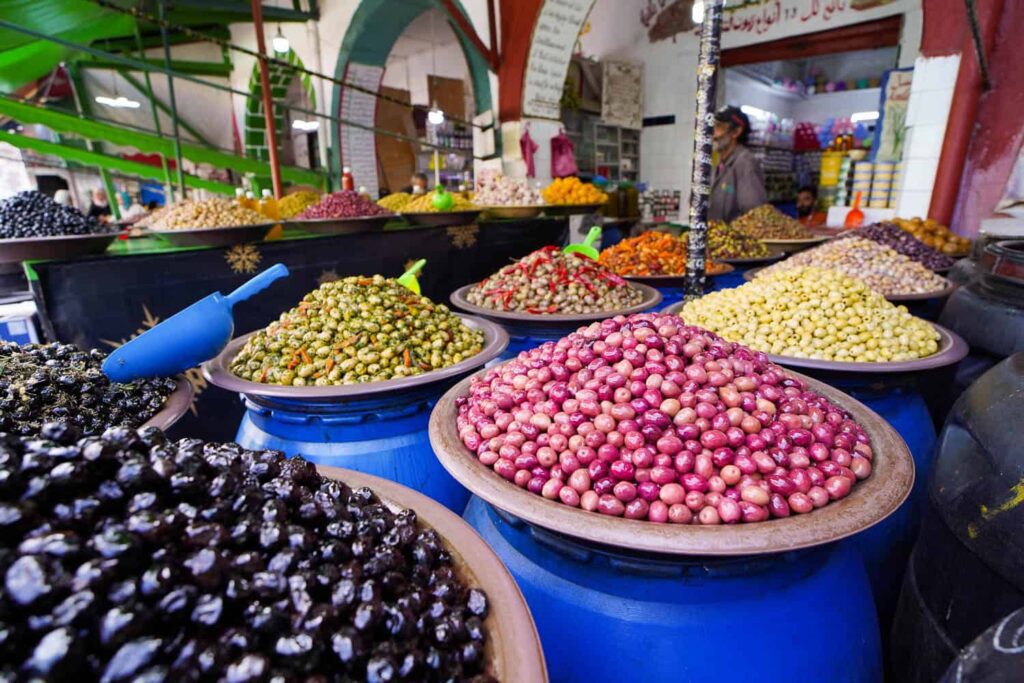
Barrel upon barrel you’ll be spoilt for choice!
When you visit the Great Habous Olive Market, you’ll be spoilt for choice on which olives to buy.
There are literally barrels and barrels of them, all preserved in different ways. Some are called raw or natural, and are unpreserved and extremely bitter, unlike any olives we’ve tasted before. Others are cured and preserved in brine or salt, giving them their distinct briny flavour that we most associate olives with.
There are different colours that have been marinating in all kind of spices. Some with whole garlic cloves, spices, chillies, hot peppers, rosemary, thyme, anything your heart can imagine, they have it. The choices are endless.
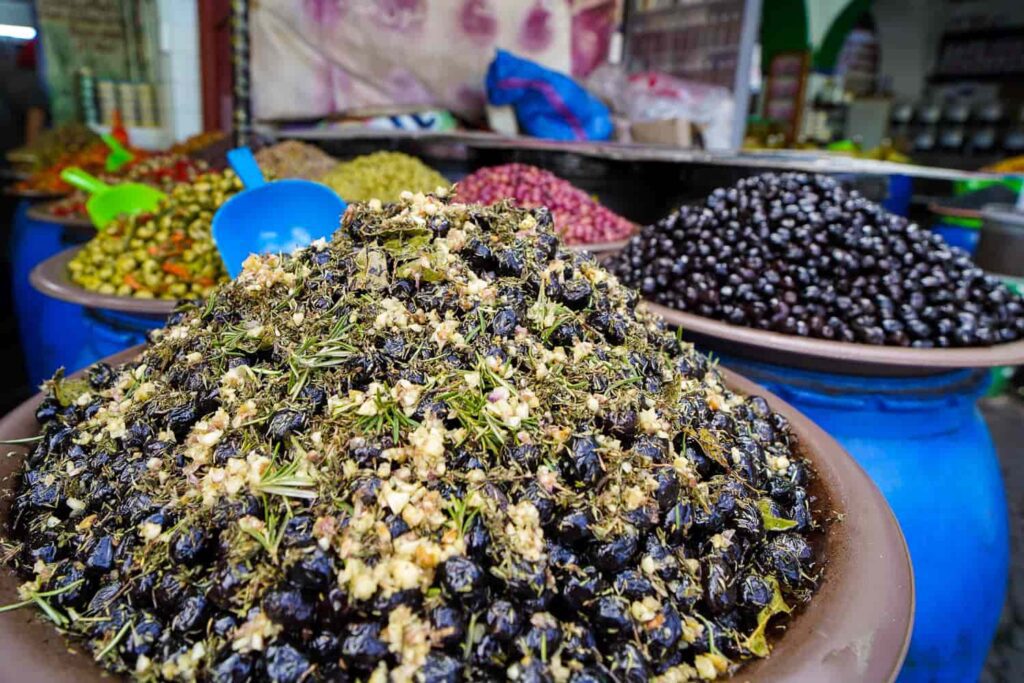
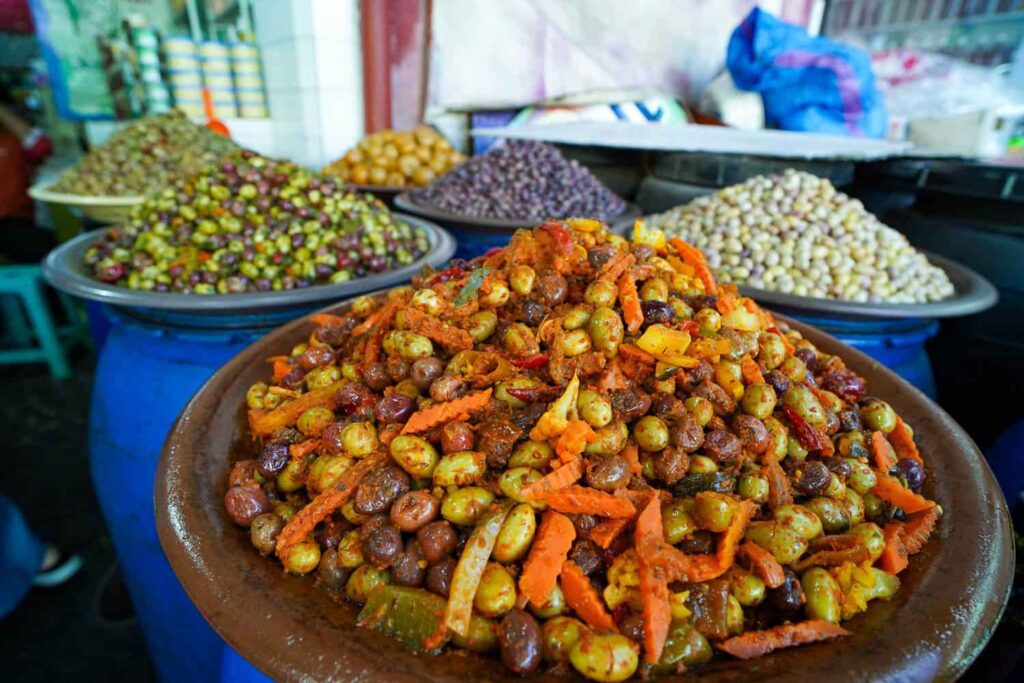
How to choose your olive seller
Our recommendation is to wander through all the different sellers to decide which olives you like the looks of the best.
We made our way to the far back left of the Great Habous Olive Market and met Abdullah, an extremely friendly seller who was full of information that he was willing to share with us about his olives and the market. He was ever so kind and let us taste as many as we wanted before deciding which ones to buy. Each one tasted so different than the last, with incredibly strong flavours.
We couldn’t leave without buying a few, or a kilo! Since Morocco is one of the top producers of olives in the world because of its Mediterranean climate, these were seriously some of the most delish olives we’ve ever had, and well-priced too!
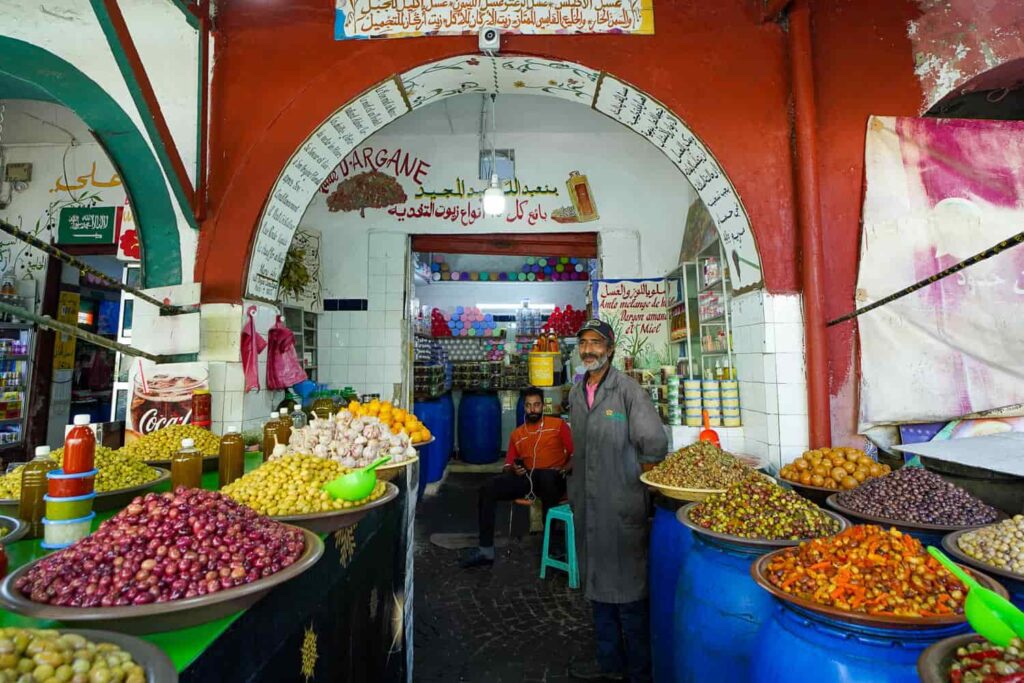
Cost
The price of the olives is very modest, for a whole kilo of four different kinds we paid 30 Dhs, approximately $3.75 CAD ($2.75 USD). If we could have fit more in our bags, we probably would have gotten another kilo.
The olive market is a place where both locals and tourists come to buy their olives. The vibe is lovely and quiet, and because of this you don’t feel like you’re overpaying for anything being a tourist.

The Great Habous Olive Market is one of the top things to see in Casablanca. Not just for the olives but also for the history of the area its located, the Habous Quarter.
While you’re checking out the olives, explore the Habous Quarter
Much of the Habous Quarter, also known as the ‘New Medina’, was constructed by the French in 1916 during the French protectorate. It was built to accommodate the families of merchants from around Morocco who moved to the area at this time.
Many of these homes still exist today, but over the years, the area has largely become a shopping district for Moroccan goods. Here you can buy any number of things beyond even a backpack full of olives! From traditional clothes and shoes, to souvenirs and metallic goods, purses and leather, there’s a lot of shopping to be done.
If you’re not a shopper, the area itself is beautiful even just to talk around. The French designed the area using Moroccan architecture, creating wide streets and covered sidewalks that are a pleasure to explore and get lost in. The old buildings are very picturesque and the Habous Quarter is a quiet respite compared to the hustle of Casablanca.
A must visit on your trip to Casablanca
When exploring the Habous Quarter one of your number one stops needs to be the Great Habous Olive Market. Whether you’re an olive lover like us or not, it’s more than worth a stop to experience the quiet courtyard, chat with the local sellers about the olive trade, as well as escape the flurry that is Casablanca.
Who knows, you might even turn into an olive lover, yet.
Name: The Great Habous Olive Market
Address: H9GW+W27, Casablanca 20250, Morocco
what3words: ///painter.reform.cobbles
Price: 30-40 Dhs/kg


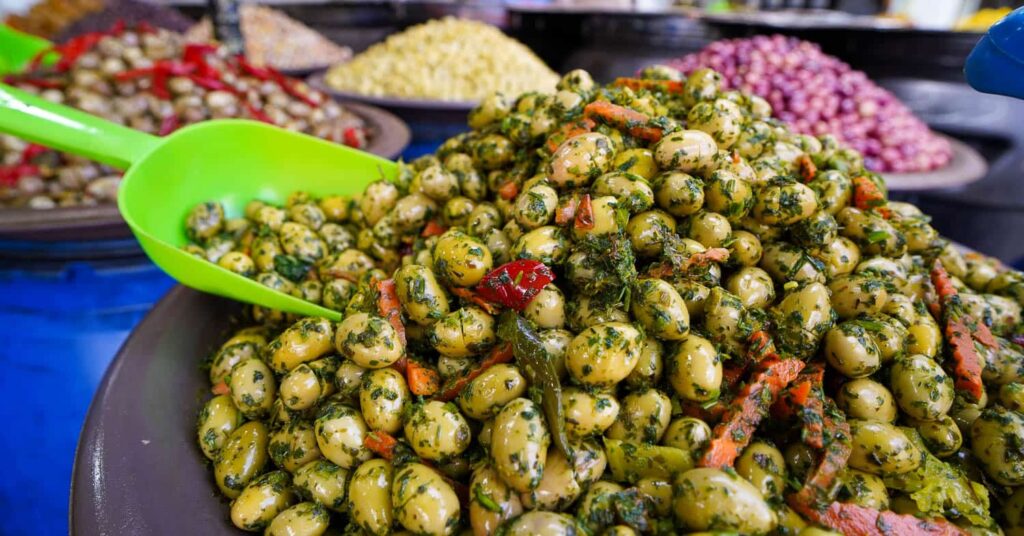
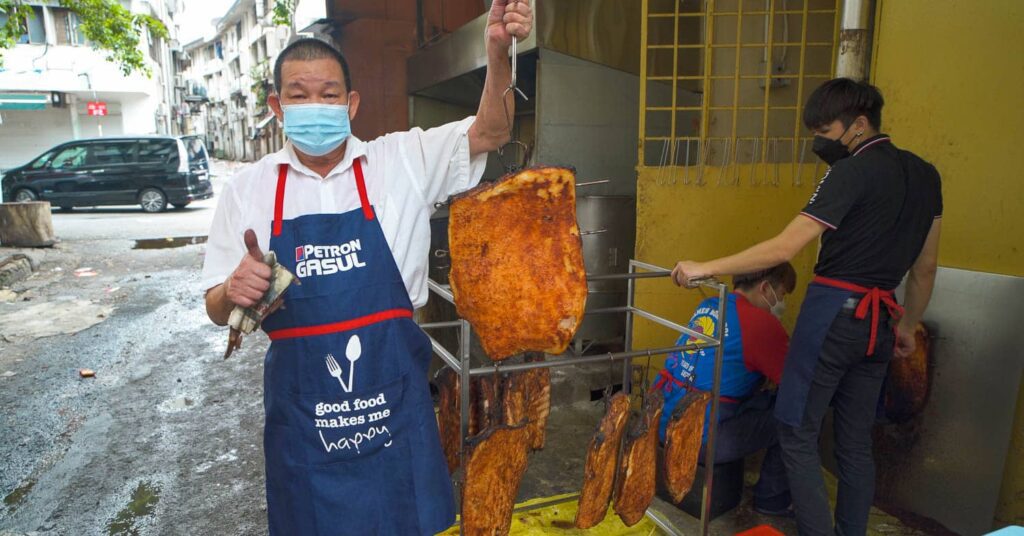
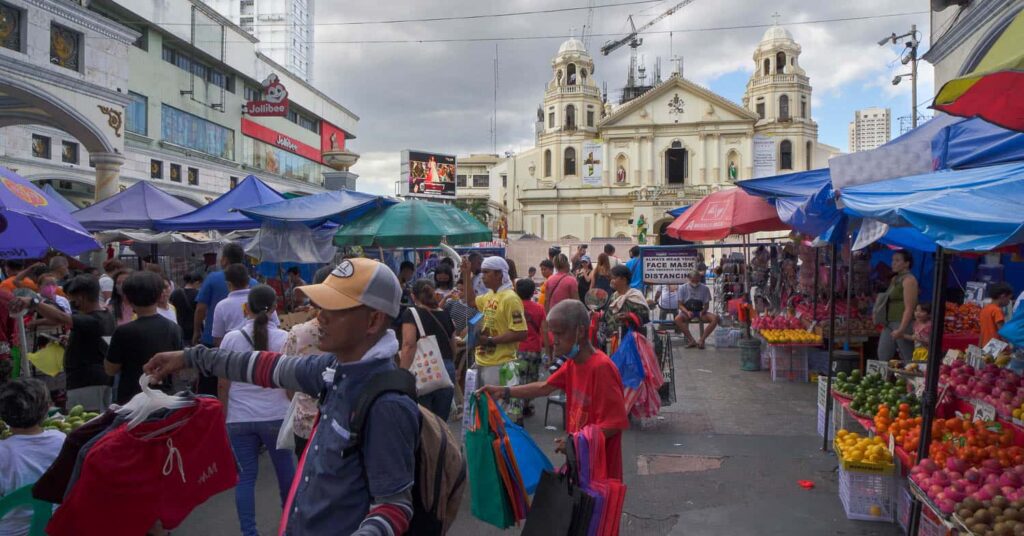

Thank you soooo much for this amazing article about our Moroccan Olive.. I felt you put a lot of energy as well as love and respect when you were writing it.
Thank you much love and respect.
Foodies_Morocco
Thank you so much for your comment! Glad you enjoyed the article. Moroccan olives are some of the best in the world and should definitely get the respect they deserve ; )